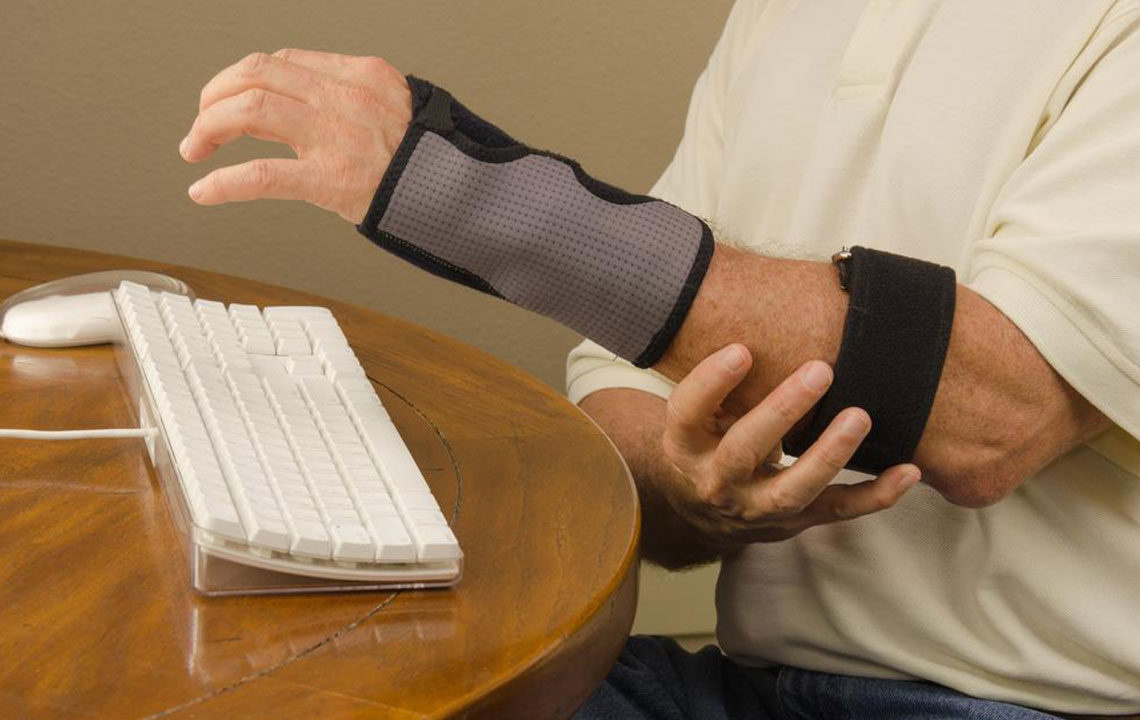Different Types of Elbow Braces

Tennis elbow is a painful inflammation of the tendon that occurs on the outer border of the elbow as a result of overuse of lower arm muscles. It is a common problem and is treated with the help of an elbow brace or tennis elbow strap. These straps are available widely in the market in different sizes, forms, and types. To choose a suitable elbow brace, one needs to try it out to see how the different types of braces work.
Choosing elbow braces
There are some primary factors you need to consider before buying elbow braces. Mainly, there are three varieties of elbow braces available in the market:
- Epicondylitis clasp
- Tennis elbow strap
- Elbow sleeve
Epicondylitis clasp
The Epicondylitis clasp is usually the more expensive variety of tennis elbow supports and needs to be fitted properly to be effective. Such straps come with a clip or plastic clasp which fits around the arm and is secured with a strap with a pressure point that coincides over a muscle just a couple of centimeters below the point of pain that is near the elbow. The pressure on the tendon or muscle that is attached to the lateral epicondyle absorbs the impact that is transmitted to the tissues causing the injury. The angle at which the tendon works also changes according to the direction of the forces, thereby relieving symptoms of golfers elbow and tennis elbow.
Benefits of an epicondylitis clasp type tennis elbow brace:
- If fitted accurately, they can be applied precisely to the point required which can help ease the bothersome symptoms.
Disadvantages of an epicondylitis clasp type tennis elbow brace:
- Can be pricey
- Difficulty in placement
- A fair chance of moving out of place
An epicondylitis clasp elbow brace is usually recommended for skilled tennis players who need precision support for high impact forces.
Tennis elbow strap
A tennis elbow strap is a simple elbow brace available in different types that is wrapped around the forearm, just below the elbow. Certain varieties have additional pressure pads that are meant to sit at the muscle just below the point of pain of the elbow. These braces work by absorbing the forces which are transmitted through the soft tissues to the point of pain on the outside of the elbow by compressing the upper forearm. These braces are extremely useful as they change the angle at which the tendon works at the elbow. It alters the forces that are applied to the tendon attachment, thus permitting the injured area to recover faster.
Advantages of a tennis elbow strap:
- Relatively inexpensive
- Easy to fit
- Level of compression can be adjusted according to requirements.
Disadvantages of tennis elbow strap:
- Less precise than an epicondylitis clasp
- No heat retention
A tennis elbow strap is recommended for people who display tennis elbow symptoms.
Tennis elbow sleeve
The tennis elbow sleeve is a combination of a simple elbow-sleeve along with a strap. While the sleeve provides compression, warmth, and support for the entire elbow, the strap can be tightened around the upper forearm. It thus works in the same way as a tennis elbow strap.
Advantages of a tennis elbow sleeve:
- Provides warmth to the area of pain, which speeds up the healing process.
- Tendons not damaged acutely or have suffered recent injuries respond well to heat.
- The sleeve supports the whole joint to cover any other injuries as well as epicondylitis.
Disadvantages of a tennis elbow sleeve:
- More cumbersome to wear
- Tightening of the forearm strap could be compromised as compared to a separate strap.
Tennis elbow sleeve is recommended for most people with tennis elbow symptoms.
Benefits of using elbow braces
An elbow brace that is properly designed ensures quicker healing along with the ongoing treatment. The main benefits of using an elbow brace are:
- They are cost-effective alternatives.
- An elbow brace can relieve pain caused by tight muscle tension.
- They prevent unwanted elbow movement.
- They can help prevent chronic injuries by acting as a preventative measure.
Elbow braces are therefore extremely useful to provide full support and healing for an injury. They provide stability, warmth, relief and also promote healing. These braces come in a variety of shapes and sizes and are produced by different lines of manufacturers. Choose an elbow brace that is designed properly with a breathable, lightweight material.
Even after using elbow braces, if you are experiencing pain and inflammation then it is advised that you seek medical assistance. This can help you prevent any long-term or permanent damage to the elbow.


